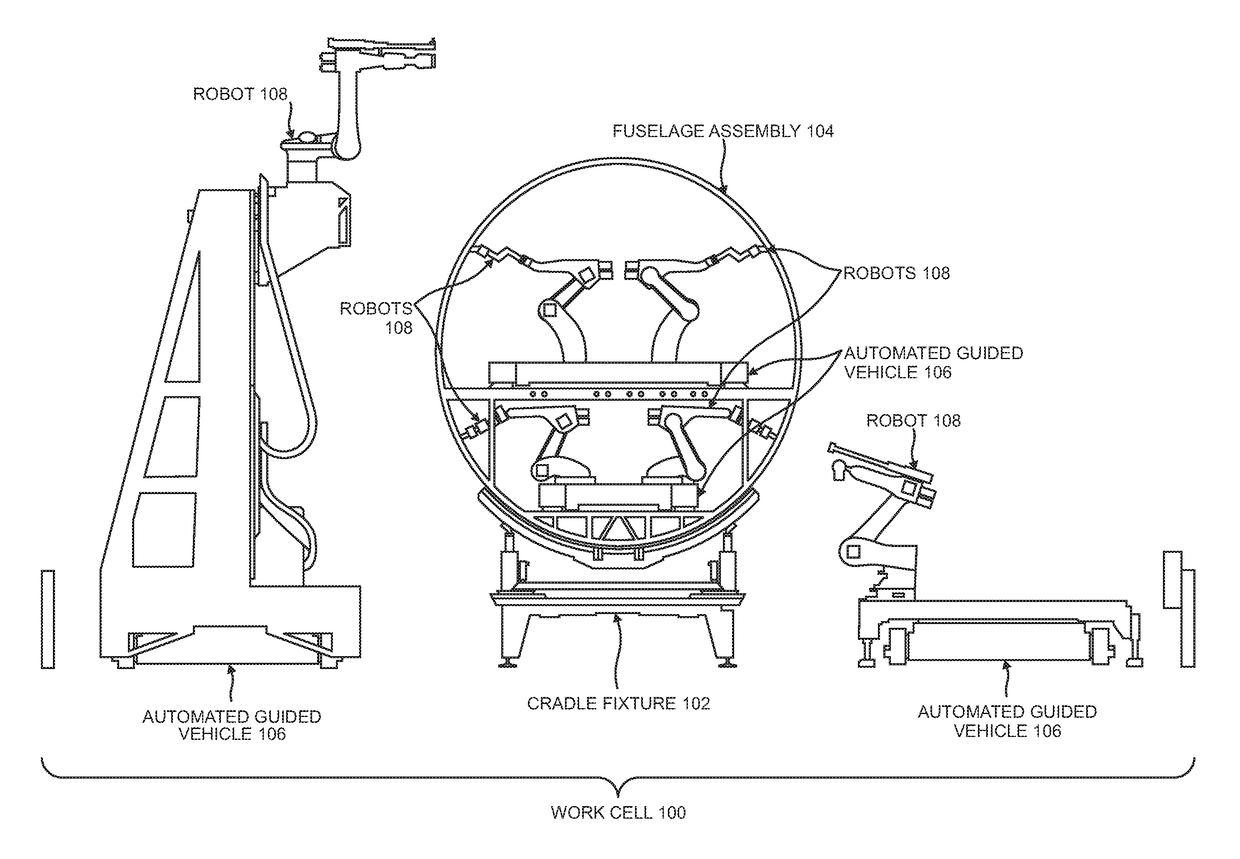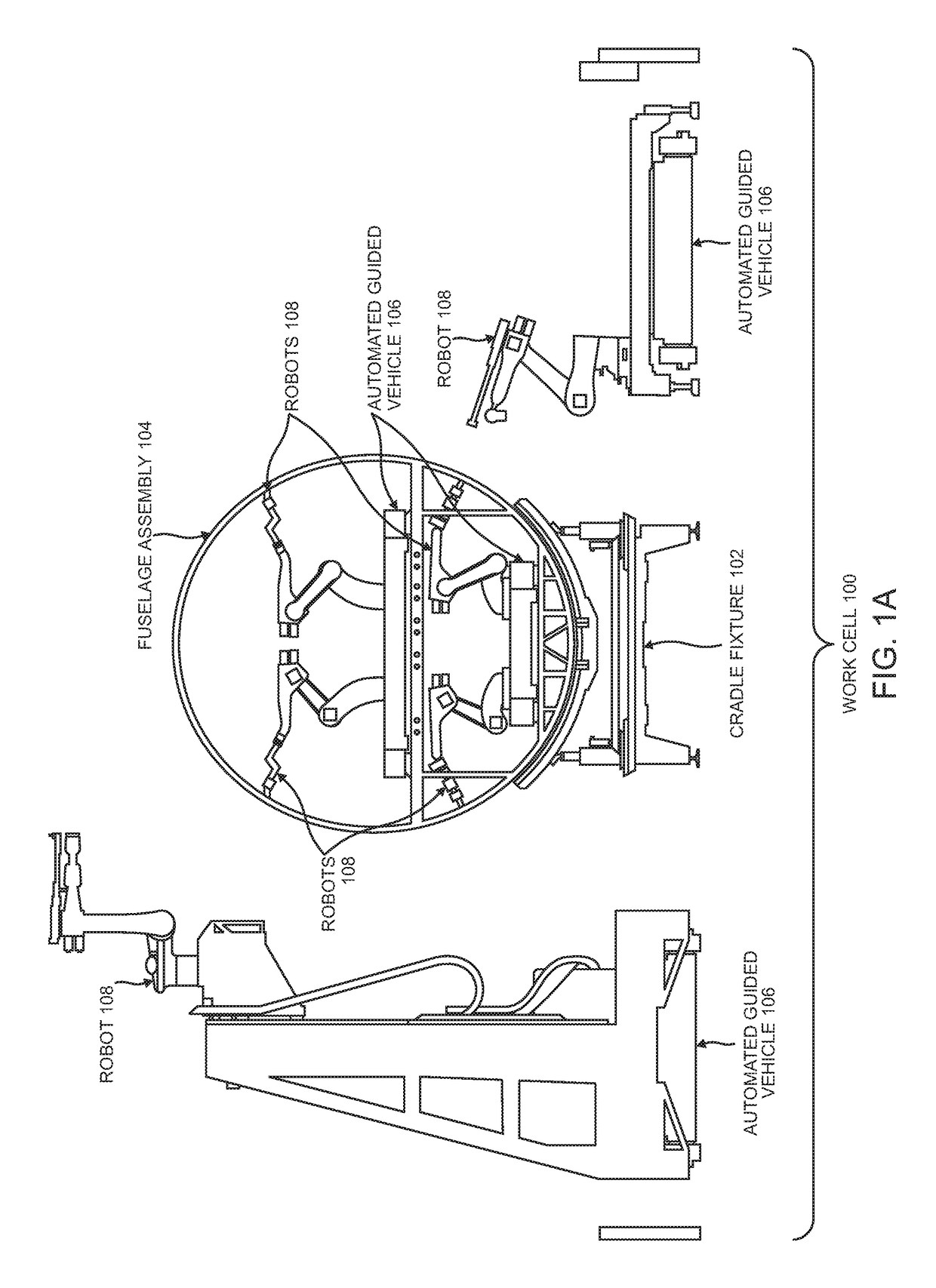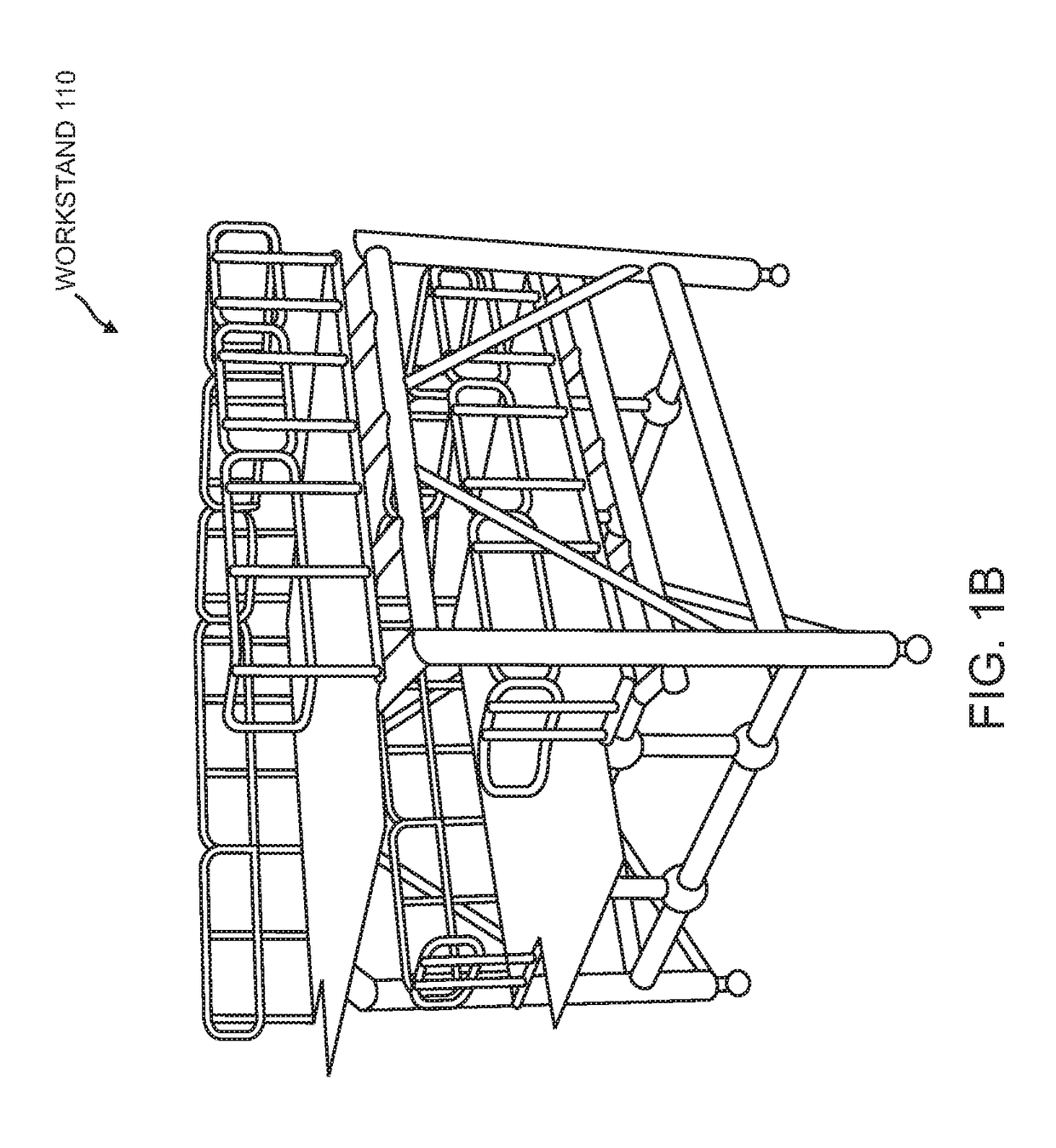Application of factory automation for an airline assembly and build process
a technology of airplane assembly and build process, applied in the field of factory automation, can solve the problems of insufficient measurement averaging of measured distances, systemic or bias and statistical random errors in distance measurements to objects within the beam path of laser scanner sensors, and inability to effectively view targets on the side of the agv
- Summary
- Abstract
- Description
- Claims
- Application Information
AI Technical Summary
Benefits of technology
Problems solved by technology
Method used
Image
Examples
Embodiment Construction
[0026]In the following description of the preferred embodiment, reference is made to the accompanying drawings which form a part hereof, and in which is shown by way of illustration a specific embodiment in which the invention may be practiced. It is to be understood that other embodiments may be utilized and structural changes may be made without departing from the scope of the present invention.
[0027]Overview
[0028]FIG. 1A illustrates a typical work cell 100 layout that includes one or more cradle fixtures 102 to hold and position a fuselage assembly 104. One or more AGVs 106 carry robots 108 both inside and outside of the fuselage assembly 104. The typical work cell 100 layout may also include a workstand 110, as illustrated in FIG. 1B, which may be positioned anywhere within the work cell 100.
[0029]Work cell and factory level automation require that the AGVs 106 achieve demanding positional accuracy and repeatability relative to the cradle fixtures 102 or workstands 110, so that ...
PUM
 Login to View More
Login to View More Abstract
Description
Claims
Application Information
 Login to View More
Login to View More - R&D
- Intellectual Property
- Life Sciences
- Materials
- Tech Scout
- Unparalleled Data Quality
- Higher Quality Content
- 60% Fewer Hallucinations
Browse by: Latest US Patents, China's latest patents, Technical Efficacy Thesaurus, Application Domain, Technology Topic, Popular Technical Reports.
© 2025 PatSnap. All rights reserved.Legal|Privacy policy|Modern Slavery Act Transparency Statement|Sitemap|About US| Contact US: help@patsnap.com



